In the middle of the night, huddled with her team on an island in the Hauraki Gulf, Predator Free Apprentice Marcia Welch sits and waits. She’s listening out for the pitter patter of webbed feet. It’s part of the regular work involved in monitoring tākoketai (black petrels) on Aotea (Great Barrier Island).
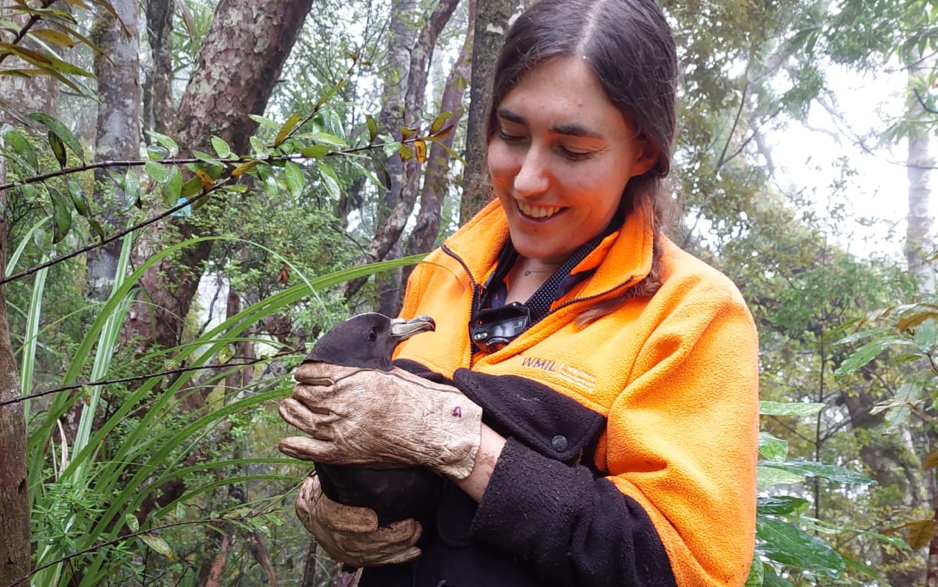
Here, Marcia gives her first-hand account of the day to day work required to monitor this native seabird colony.
Midnight monitoring majestic birds
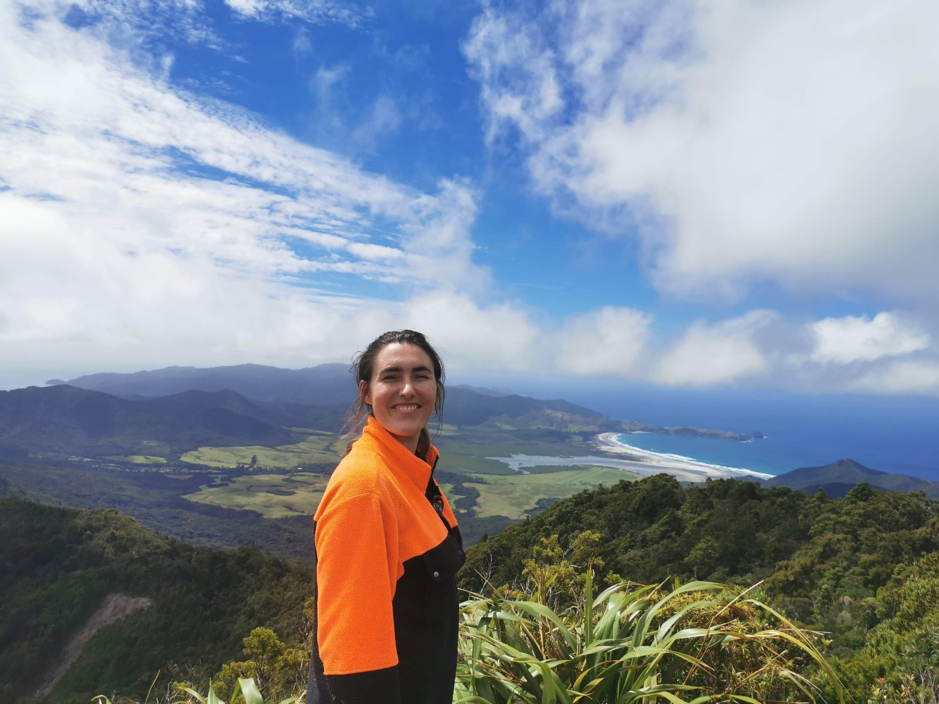
Monitoring our native black petrels meant working some unusual hours – including midnight shifts, which posed their own challenges. Squinting hard, you’d just be able to see the outline of these small seabirds making their way through the darkness.
Seeing these silhouettes, you stifle a giggle. Watching their gangly waddle as they beelined for a cliff edge was certainly a sight. But amusement would quickly turn to silent awe as they leapt, black wings outstretched, and vanished gracefully into the night sky.
Black petrels. They’re certainly worth staying up late for.
A rare opportunity with a rare bird
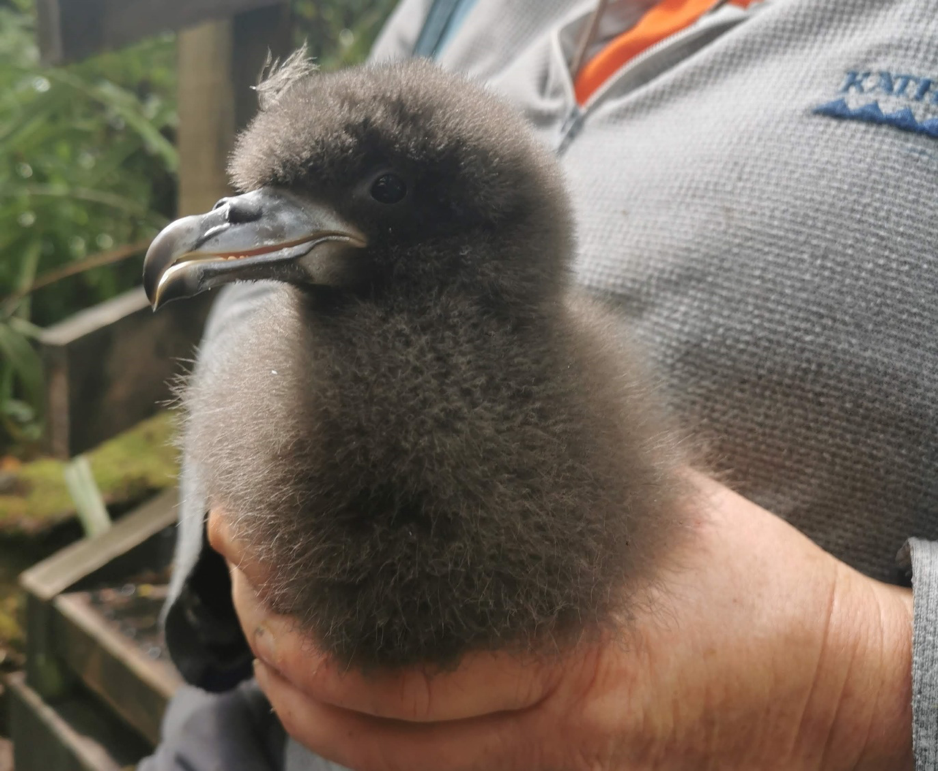
As an apprentice working for Wildlife Management International (WMIL), I had the pleasure of going to Aotea (Great Barrier Island) to assist with monitoring tākoketai over the summer breeding season.
My days were spent checking nests within a study site that’s been monitored by WMIL Owner and Managing Director Biz Bell for over 20 years.
It’s important work for a population that’s sadly threatened.
Once, these beautiful seabirds were recorded over the entire North Island – even as far south as Nelson. But today? All that remains is the remnant population that exists on Aotea and neighbouring Te Hauturu-o-Toi (Little Barrier Island).
They’ve been the unhappy victims of introduced predators. Rats, cats, stoats and feral pigs have all played a part in preying on the birds, chicks and eggs. While environmental degradation has dwindled their available habitat.
There are now only around 2,750 breeding pairs on Aotea, so monitoring these birds is an essential insight into this fragile, taonga species.
Sights and sounds of island life
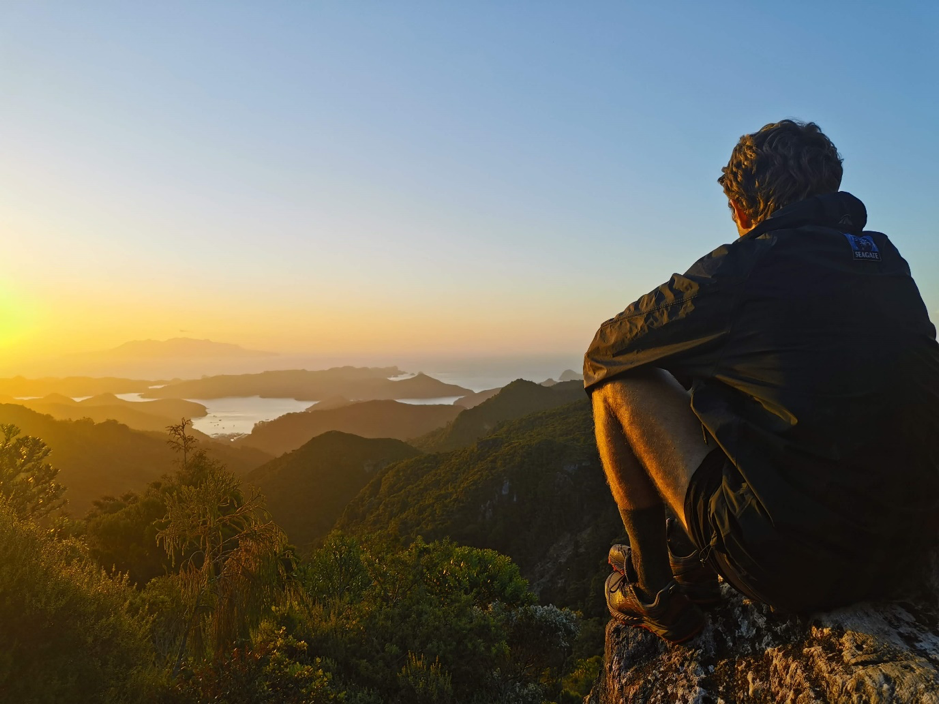
During the day I was part of a small team that checked on nests. The status of the nest was recorded (failed, egg or chick), and we’d also record the band numbers of the parents.
On Aotea when the sun goes down, the island comes to life.
At dusk, kākā screech across a blazing pink sky. If you’re lucky, you’ll catch a glimpse of the first petrel taking off in the distance.
‘Clacking’ is the term used to describe the distinctive noise male petrels use to find a mate, a delightful addition to the late-night chatter. It’s this noise that helps us find and band new birds.
Embracing the ‘newbie twitch’
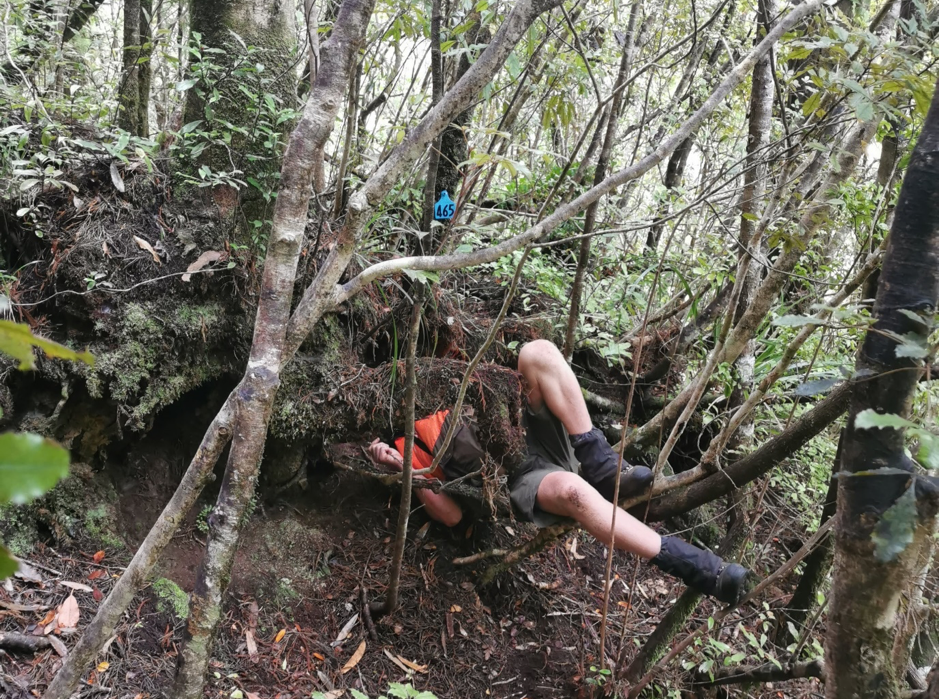
Banding black petrels was one of my first banding experiences. And, like most newcomers, I was victim to the newbie twitch.
You see, black petrels nest in burrows under the ground. Banding them requires sticking your arm into a burrow with some trepidation on what might be waiting for you in the darkness.
This newbie twitch was a term coined to describe the involuntary twitch you make in the process of reaching into the unknown.
Sometimes you reach in and find nothing. Sometimes it’s the surprised squawk of fluffy chick. But most of the time, it’s the angry bite of a rudely interrupted petrel.
Whatever awaits your arm, the process is a pretty odd feeling – and one that takes a little getting used to. But once I adjusted, I loved the challenge of gently leading out the petrels and re-emerging from a burrow, cobwebbed and triumphant.
Fostering petrel love with island visitor
As well as being home to the petrels, Aotea is frequented by travellers and hikers that come to explore the island’s exquisite trails and huts. Many of these travellers will prioritise a trip to Mount Hobson summit, the highest point on the island.
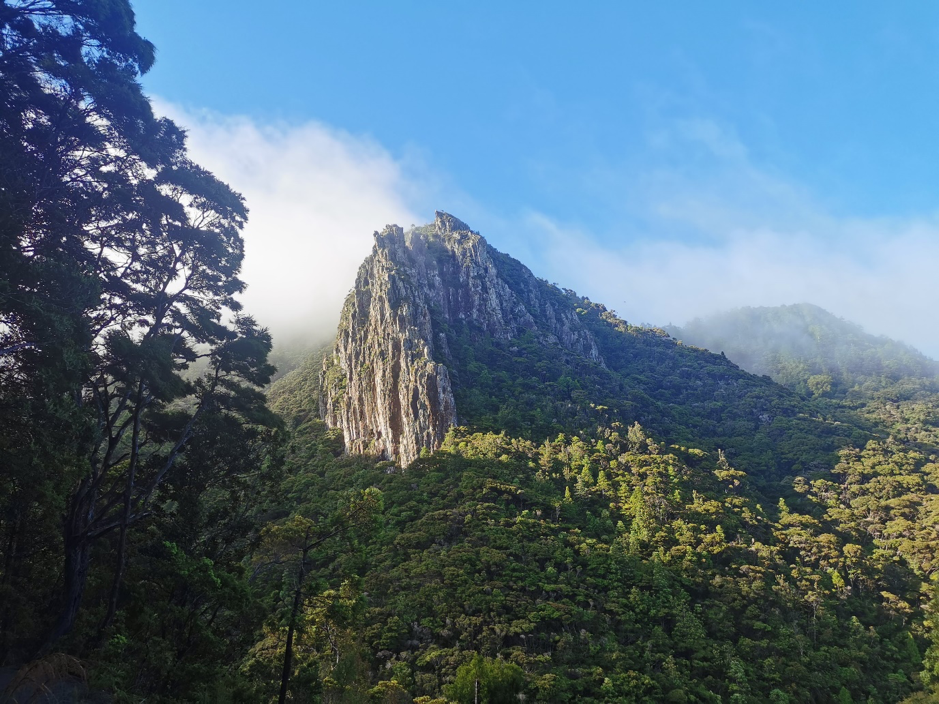
With panoramic views out to Te Hauturu-o-Toi and yachts blissfully bobbing on the vibrant blue waters of Kaiarara Bay, the summit is a definite visual highlight for human travellers.
But the petrels favour this spot for another reason. This is their take off spot.
Unable to take flight from the ground, the petrels use special launch spots like the summit, trees or even climb rocks to take to the sky.
Boardwalks were put in place on the island to ensure intrepid travellers don’t go off the trail and plunge into an unsuspecting petrel. So, more often than not, when we were shoulder deep in a burrow just alongside the public track, a group or a family would pass by.
Understandably, they’d stop and ask what we were doing. Not only could we tell them, we could show them.
The smiles on their faces when they got to see a brand new fluffy chick, or admire the sleek black plumage of an adult petrel were unforgettable. For most, this was their first up close interaction with a petrel – and it quickly became the highlight of their entire trip.
I had a wonderful experience out on Aotea and I adored working with these amazing birds. I also loved seeing first-hand the power of advocacy. Getting to facilitate interactions between people and petrels gave me an incredible sense of hope for the future of this endangered species.
What’s the Predator Free Apprenticeship Programme?
The Predator Free Apprentice Programme kicked off in late 2020, as a result of Jobs for Nature funding from the Department of Conservation. There are currently 64 apprentices placed with a range of host organisations around New Zealand. The two-year programme gives people experience and training in predator control. It’s growing the experts of the future that will help us meet the 2050 target.

